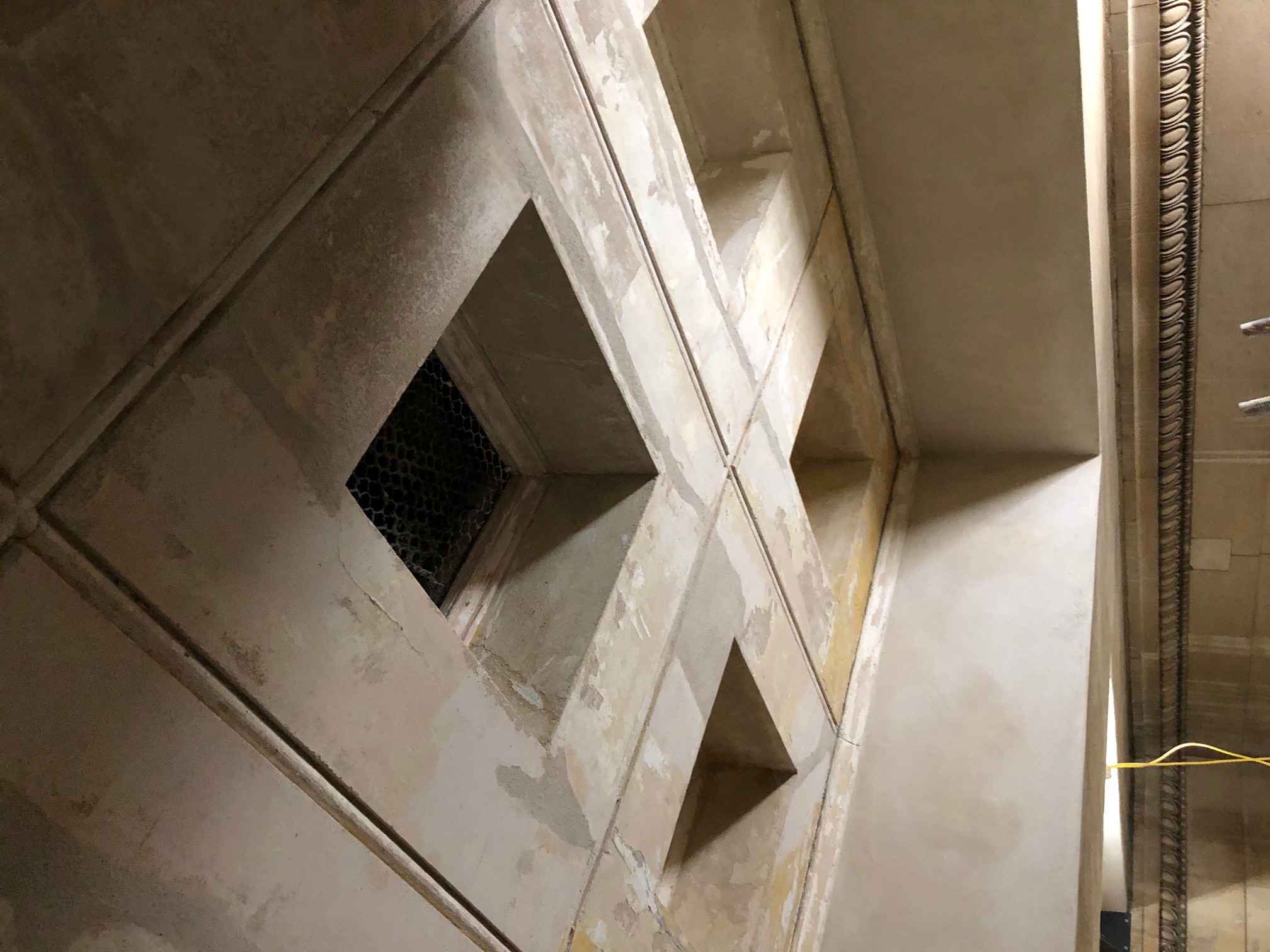British Museum restoration: renovating coffer downstands with lime plaster

“The existing copper roof of the British Museum’s South Colonnade had decayed and lost its integrity over the 60-year period from when it was originally installed,” explains Johnnie Wynne, project manager, Curo Construction.
“There was water penetrating the walls and causing the lath and plaster coffered soffits to become structurally unstable. Following several schemes of temporarily securing the plaster to the soffits, the museum took the decision to commission a full refurbishment of the South Colonnade and restoration of the soffit using traditional plastering methods.
In 2020, Artisan Plastercraft and Curo Construction undertook an extensive schedule of repairs using external lime plaster repairs at the British Museum to resolve the issues.
Renovating the museum
“We first needed to repair the roof, then provide structural reinforcement and restore the plaster,” continues Johnnie.
“As the British Museum is a Grade 1 listed building, we needed to work to the right standards, and ensure we were using the same material that was originally used on the soffits, which was lime plaster. We worked closely with Richard Ireland FRSA, who is a leading conservation consultant for the repair, conservation and restoration of historic plaster in the UK, to ensure all of the correct standards were adhered to.”
“The coffer downstands are just behind the main columns of the British Museum, and we needed to renovate them using a natural finish that matched the existing plaster perfectly,” says Russell Brewis, Head of Marketing, Artisan Plastercraft.

“Following an on-site survey of the museum’s plasterwork, we needed to choose the correct colour plaster. We provided three colour samples of Lime Green’s Natural Finish – honeysuckle, tallow and grinshill – and Richard Ireland chose the colour that was most similar to the original plaster, with his expertise in historic plaster and paint.”
The scale of operations
“One of the biggest challenges was the building itself. As it is a Grade 1 listed building, we weren’t able to fuse or tie the scaffolding to the fabric of the building, so all of our scaffolding had to be self-supported. This took a lot of engineering as we were working at a height of over 14 metres,” explains Johnnie.
“Some of the work took place during lockdown, however, once the British Museum opened to the public and visitors began using the entrance we were working on, it created more risks that needed to be assessed.
“Logistically, the plastering itself went very well. Artisan Plastercraft has a great system where you’re able to take a photo of the areas you’re working on before you start the work, then you’ll do the repair and take another photo, so the British Museum was able to see exactly what had been done and how long it had taken.”
The proper products
“We often use lime plaster on heritage buildings, so it was perfect for the renovation of the British Museum, and Lime Green’s Natural Finish matched the existing building perfectly, which is what we were looking for,” continues Johnnie.
“The products were also natural and non-toxic, which was great given the other challenges we were already dealing with, as it meant minimal PPE for those working on site.
“The product went on easily, cured easily and was easy to match to the existing plaster, which is all you can really ask for.”
“We’ve worked with Lime Green on other heritage projects, such as Shakespeare’s Globe Theatre, so we know their products are fit for purpose. The British Museum is a prestigious landmark building, and we were keen to use the best products available. We wanted high-quality, long-lasting products, and we’re extremely pleased with those Lime Green consistently provide us for heritage building projects,” concludes Russell.
“It was a pleasure to see our Natural Finish used on such a prestigious project, and we’re seeing a lot of projects using lime products, not just to protect the building, but to add decoration to match the original stone for a fraction of the price.
“It’s our passion to supply authentic, compatible products, which are the right colour and texture, and that’s what we try to do. We want to see people using lime because of its suitability and ease to use, it really does do a great job,” comments Simon Ayres, co-founder and managing director, Lime Green.
For more information on the products used for this project visit Lime Green
